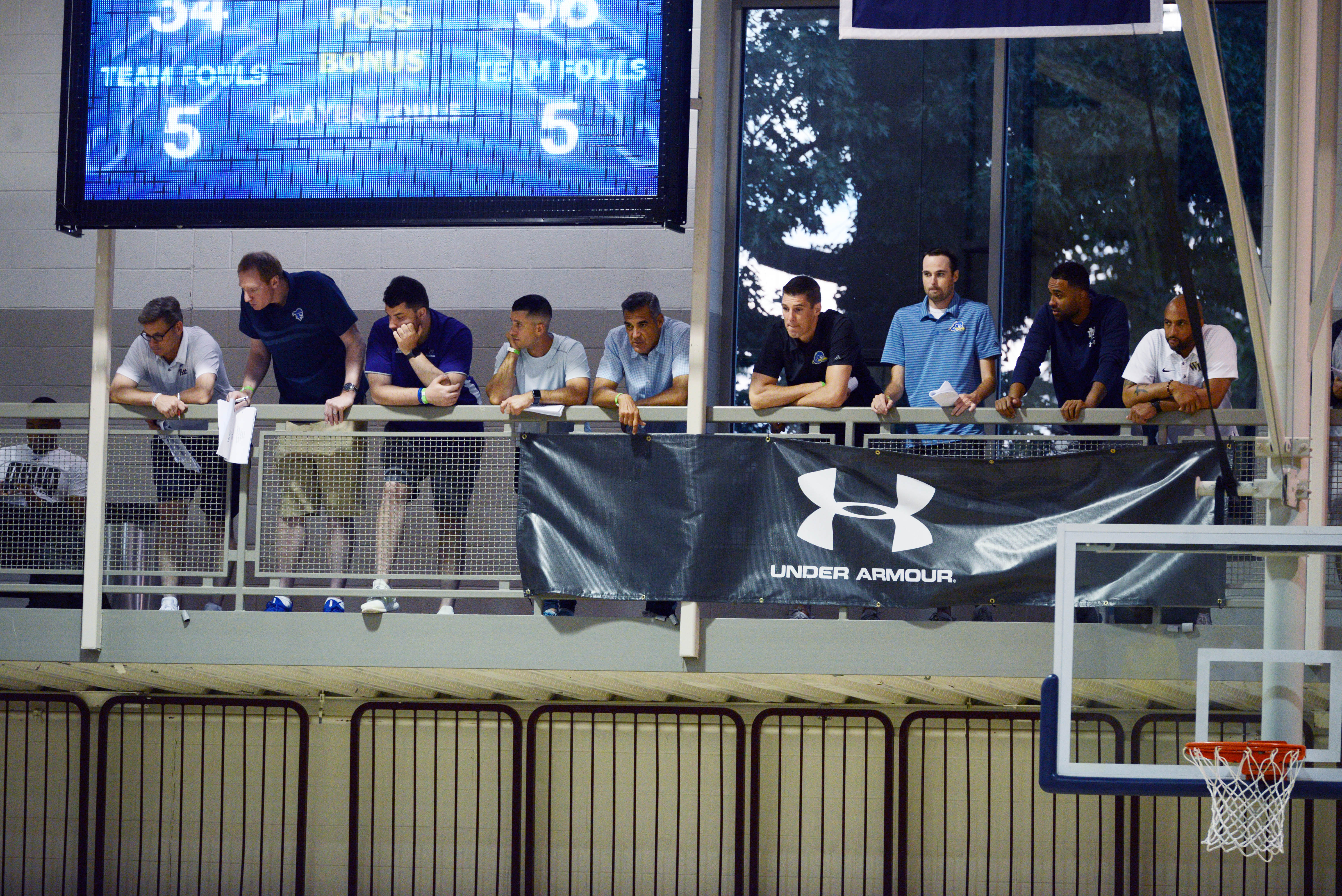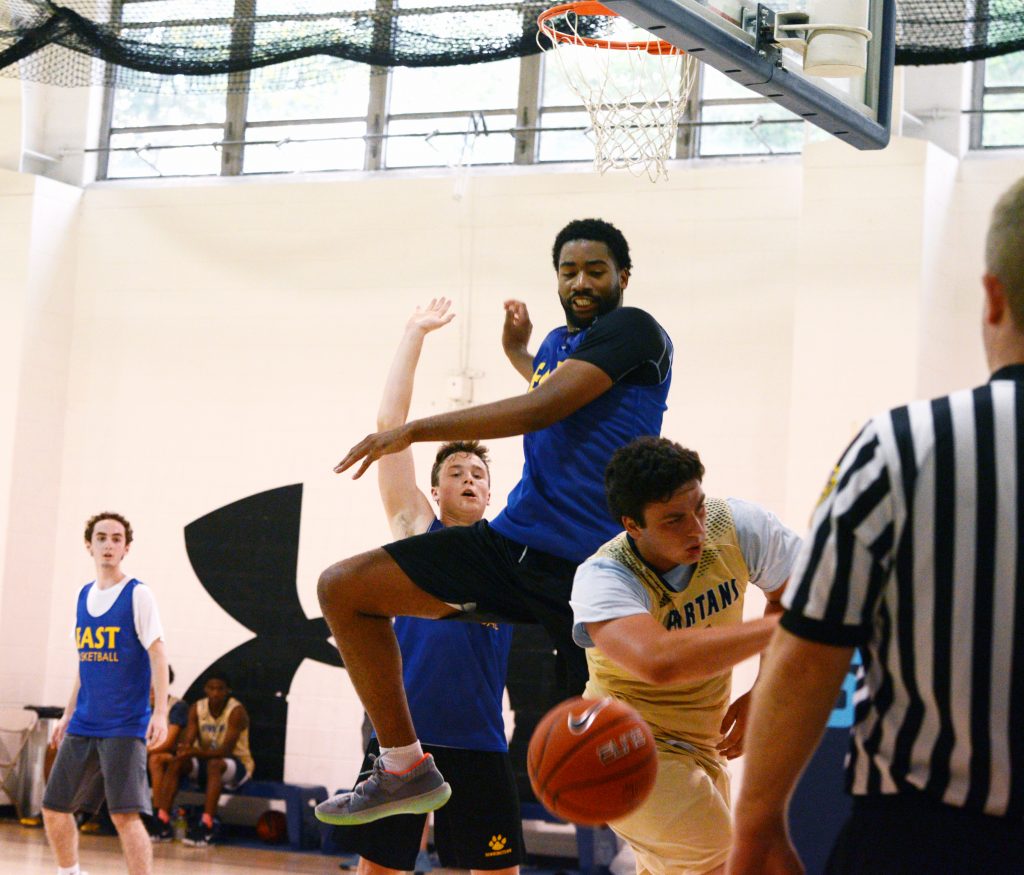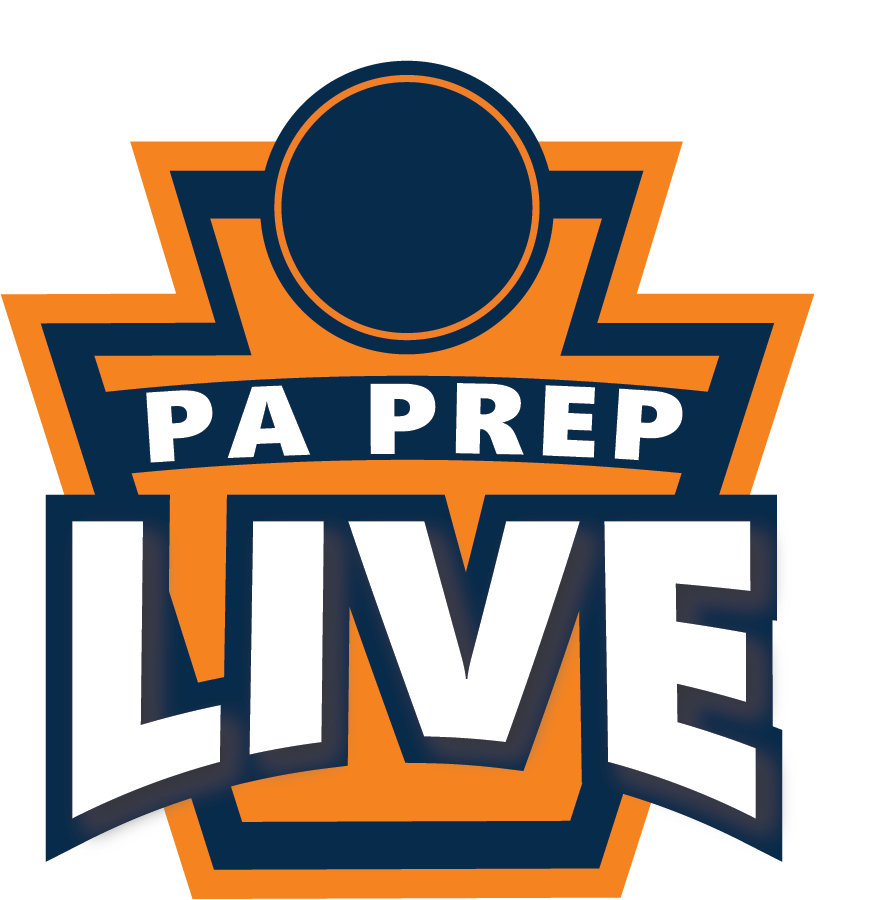
New NCAA rules put area high school teams on display
PHILADELPHIA >> College men’s basketball coaches flocked to Jefferson University during the past two weekends to see some of the area’s — and country’s — top talent play for their high school basketball teams in the Philly Live 1 and 2 events.
Four and five-star recruits like Roman Catholic’s Jalen Duren, Camden High School’s Lance Ware and Rutgers Prep’s Trey Patterson drawing eyes from college coaches during the summer is nothing new. The fact that they were playing for their high school teams is.
Up until this year, high school players had five weekends (two in April, three in July) to play with their grassroots (or AAU) programs during the NCAA Evaluation Period, when Division I coaches may watch college-bound student-athletes compete, visit their high schools, and write or telephone student-athletes or their parents.
In an effort to shift the recruiting process away from shoe-company sponsored AAU events, the NCAA, the governing body for college athletics, limited those periods to one weekend in April and one in July.
In place of the previous July dates, the NCAA created two weekend recruiting windows (June 21-23 and June 28-30) where college coaches could attend scholastic events approved by the NCAA and National Federation of State High School Associations.
Archbishop Wood head coach John Mosco and Imhotep Charter head coach Andre Noble, through PIAA’s District XII, put together the Philly Live 1 and Philly Live 2 events at Jefferson University.
A number of the area’s PIAA teams competed against in-state and out-of-state competition in front of a plethora of Division I coaches, headlined by Villanova’s Jay Wright, Kentucky’s John Calipari and North Carolina’s Roy Williams.
“We’ve been grinding on this to get this approved, doing a lot of the grunt work in the back scenes, so it’s been great,” Noble said of setting up the event for the first time. “This is good to see the end outcome of coaches here. I saw a lot of kids tweeting out offers that they got last weekend. Just to be a small part of this, and to bring this to Philadelphia has been great.”

Several members of the Pennsylvania Independent Schools Athletic Association participated in a similar event sponsored by the New Jersey State Interscholastic Athletic Association.
Teams like the Hill School, Perkiomen School, Malvern Prep, Germantown Academy, Friends’ Central and Westtown School faced off against other top-level private schools in front of Division I coaches at the Mid-Atlantic Independent School Shootout, held at Blair Academy (N.J.) last weekend and at Hun School (N.J.) on Saturday and Sunday.
“Your kids get the chance to play multiple times in front of coaches, up close, against good competition,” said Hill coach Seth Eilberg, who has a handful of Division I prospects on his roster.
The goal of the NCAA’s new policy was to “develop and strengthen the relationship between college coaches and high school basketball programs,” according to the NFHS website.
Playing with your high school team in June is not new. Along with various summer leagues, teams often went to college’s team camps during the NCAA Quiet Period, when coaches are not allowed to make contact with recruits outside their college campus.
In the three weeks of July during the Evaluation Period, most of the top players would play in events for their AAU teams in search of exposure.
“It hasn’t changed a ton for us other than the fact that our entire team is getting the chance to play and you’ve got coaches everywhere,” said Methacton coach Jeff Derstine, whose team planned to play in both Philly Live events. “Some of the other stuff we’ve done, you don’t have all the Division I coaches.”

Mosco and Noble received positive feedback from college coaches after the Philly Live 1 event last weekend. Both said coaches told them there was an added competitive level from kids playing for their high school teams.
Norm Eavenson, a talent evaluator for his Middle Atlantic Recruiting Service, and Chick Gillespie, a recruiting analyst for Phenom Hoops Report said the scholastic setting should be more comfortable for players.
They both also liked seeing the structure that lends itself more to the high school teams who play together throughout the year. Gillespie mentioned the use of post players as one thing in particular that stood out to him.
“I kind of like this setting, but at the same time I don’t want to see AAU go away,” Gillespie said. “I want to see it both ways.”
Archbishop Carroll highly-recruited wing John Camden, who plays with Team Final, concurred.
“It’s fun to be able to play for my high school team and AAU team at different events both with coaches watching,” Camden said.
Eavenson also noted that players who are the 7th, 8th or 9th man on their AAU team usually function in much larger roles at the high school level.
Archbishop Wood junior Jaylen Stinson said he saw the direct benefits of playing with the Vikings during the evaluation period last weekend, when he received Division I scholarship offers from Iona and Mount St. Mary’s among others.
Stinson is one of four or five Wood players being recruited by Division I schools, which is a lot for a high school team. But it is much harder to distinguish himself while playing for a Team Final AAU team loaded with Division I prospects.
“I think it gives us more exposure since it’s with our high school team instead of like an All-Star team,” Stinson said. “As the main players, we have to do more, so it gives a chance to show what we can do…We have a bigger role than what we would have on our AAU team or anything else.”
Downingtown East’s Andrew King, who plays for the WE R1 program with players like Coatesville’s Jhamir Brickus, was also showcased more playing for his high school team during the past two weekends.
King, a 6-foot-7 wing, said there were some challenges playing in front of evaluators. The Cougars graduated a talented senior class last season and were missing several other players during the past two weekends who play baseball in the summer.
“It’s a hundred percent different,” King said. “I can definitely stand out a little bit more, but it’s different than AAU because there everyone usually knows everything to do, everyone plays their role. Here (at Downingtown) I play a lot bigger role, more than just what I do best, so I have to expand my game.”

While Eilberg has seen his players instantly rewarded during the new evaluation period — brothers Caleb and Gabe Dorsey received scholarship offer from Georgetown last weekend — he thinks the system still has flaws.
Some players who have college aspirations may not have gotten a chance to play with their high school teams at events like Philly Live and the Mid-Atlantic Independent School Shootout. Those players now have just one weekend to showcase themselves individually or with an AAU team in July.
“I think this is serving a lot of the haves,” Eilberg said. “…With that period truncated and the invite only things, if you’re a kid who’s seeking extra exposure and your high school isn’t doing anything, you really don’t have the opportunities that you once had to play in front of colleges.”
The overall take away from the past two weekends, however, was that those teams who participated gave their players a couple extra games to showcase themselves against quality competition.
“A lot of people have worked hard to come together and put together stuff in response to the NCAA without a lot of notice, prep time,” Eilberg said. “It’s pretty impressive the events people have been able to put together.”

